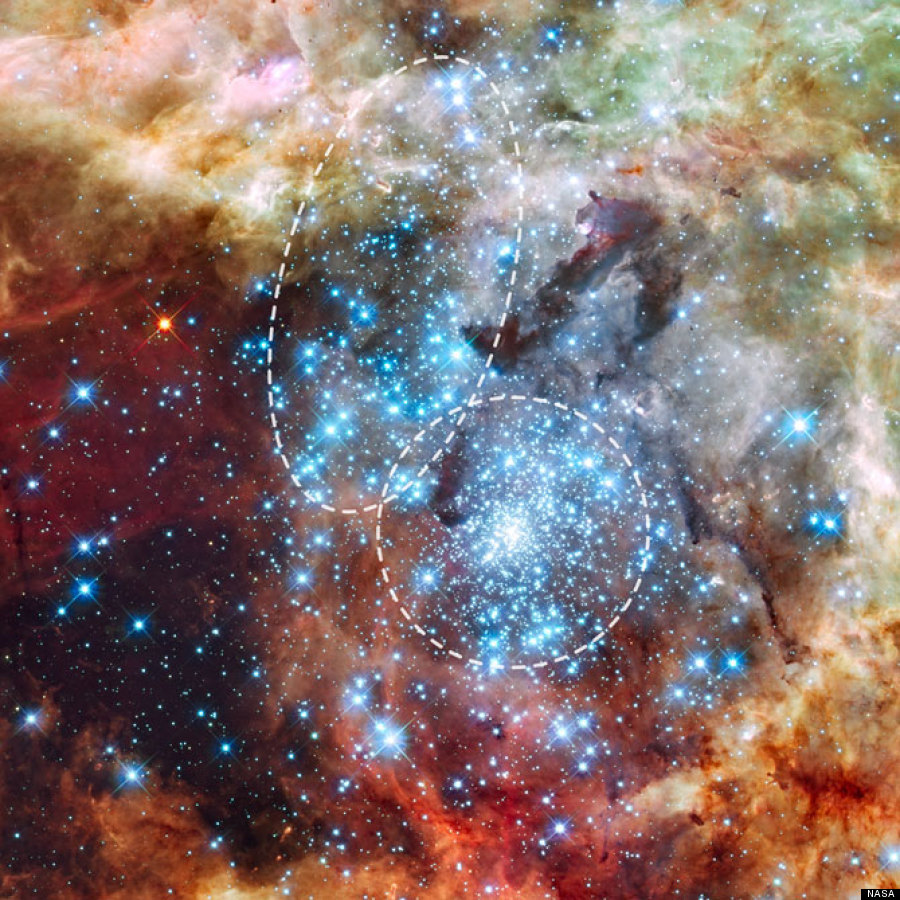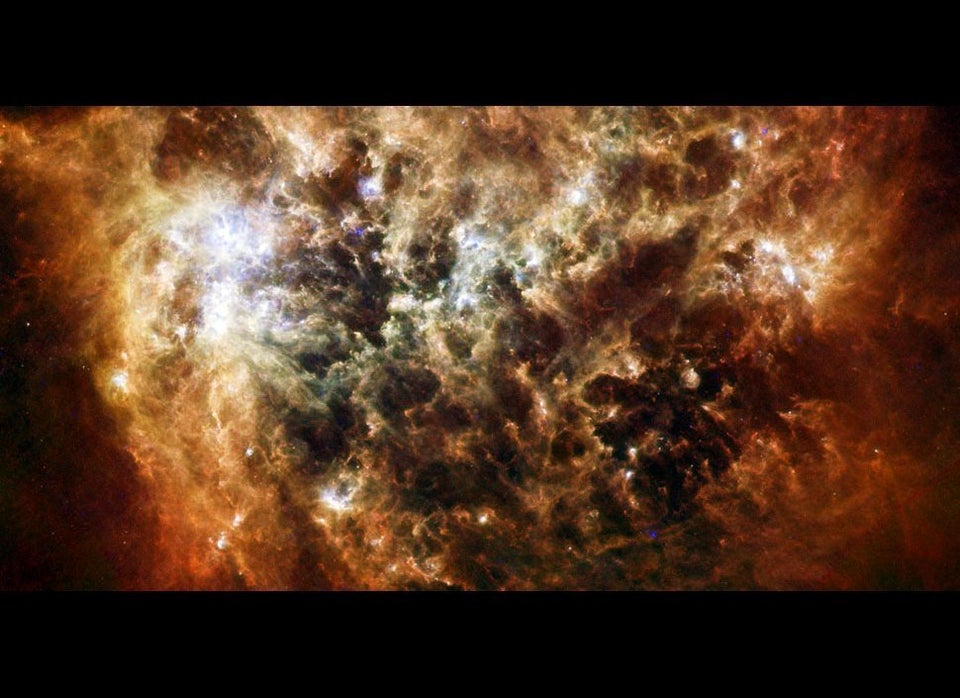NASA's Hubble Telescope has sighted two massive star clusters about 170,000 light-years away that are about to join forces.
The clusters are part of 30 Doradus, a massive region that has been forming stars for the past 25 million years; it is located in the Large Magellanic Cloud galaxy.

Astronomers initially thought the entire 30 Doradus, or Tarantula Nebula, was one cluster of stars. But recently evidence has shown that this is in fact two star clusters that differ in age by nearly a million years.
"Stars are supposed to form in clusters, but there are many young stars outside 30 Doradus that could not have formed where they are; they may have been ejected at very high velocity from 30 Doradus itself," lead scientist Elena Sabbi of the Space Telescope Science Institute in Baltimore, Maryland said.
As the team continued examining these formations, they realized the clusters took elongated shapes as is prone to happen when two galaxies merge and are pulled by gravitational forces. This unusual shaping and the varying dates of the stars present gave the conclusion that these were in fact two different clusters that are in the process of merging.
The members of Sabbi's team are D.J. Lennon (ESA/STScI), M. Gieles (University of Cambridge, UK), S.E. de Mink (STScI/JHU), N.R. Walborn, J. Anderson, A. Bellini, N. Panagia, and R. van der Marel (STScI), and J. Maiz Appelaniz (Instituto de Astrofisica de Andalucia, CISC, Spain).
